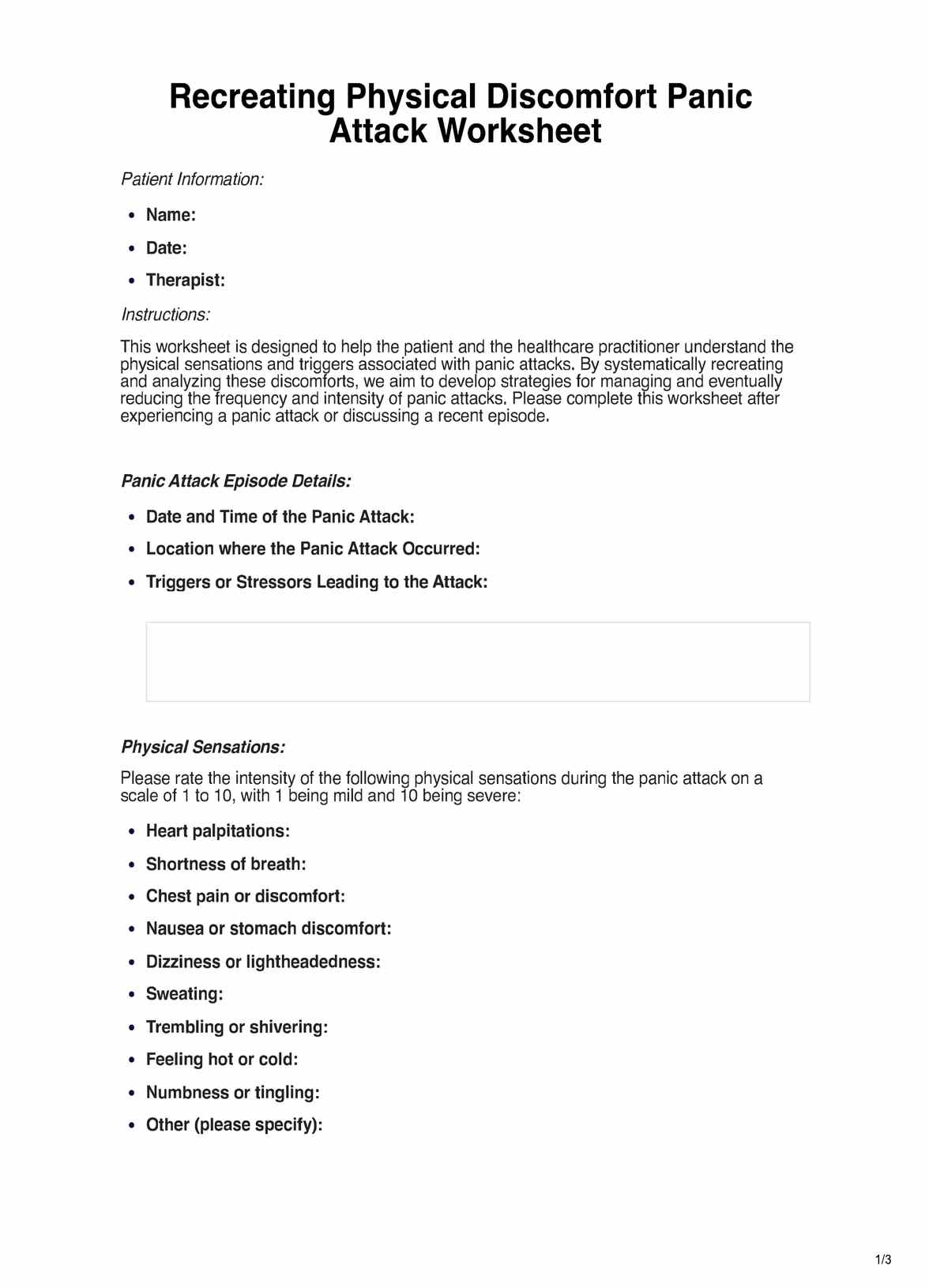It is most effective when used shortly after a panic attack, during therapy sessions, or as an ongoing tool to track progress and identify patterns. You can also use it for exposure therapy preparation and to assess the effectiveness of medications.

Recreating Physical Discomfort Panic Attack Worksheet
Manage panic attacks with our Healthcare Recreating Physical Discomfort Panic Attack Worksheet. Take control today.
Use Template
Recreating Physical Discomfort Panic Attack Worksheet Template
Commonly asked questions
This worksheet can benefit individuals experiencing panic attacks and healthcare professionals working with them. It helps individuals gain insights into their condition; healthcare professionals can use it for treatment planning and monitoring.
The worksheet can help recreate physical discomfort in a controlled environment, a crucial component of exposure therapy. By documenting sensations and triggers, it provides a basis for designing exposure exercises.
EHR and practice management software
Get started for free
*No credit card required
Free
$0/usd
Unlimited clients
Telehealth
1GB of storage
Client portal text
Automated billing and online payments











